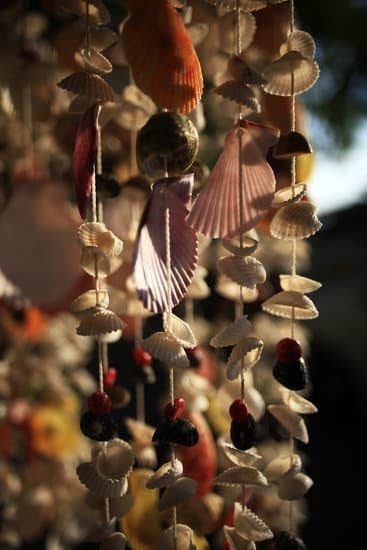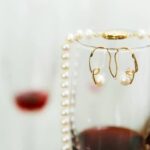The allure of vintage jewelry and the potential for hidden treasures make it an exciting and rewarding hobby for many enthusiasts. However, amidst all the charm and nostalgia, it is essential to be able to identify real diamonds in old jewelry. Whether you are an avid collector, a curious treasure hunter, or simply want to ensure the authenticity of a piece passed down through generations, knowing how to distinguish genuine diamonds from imitations is crucial.
Understanding the basics is the first step in identifying real diamonds in old jewelry. This includes differentiating between actual diamonds and diamond substitutes, such as cubic zirconia or moissanite. Additionally, familiarizing yourself with the 4Cs – carat, cut, color, and clarity – plays a significant role in determining the authenticity and value of a diamond.
As you delve into your exploration of vintage jewelry, it is also important to recognize the various diamond cuts that were popular during different time periods. From old mine cuts to marquise and brilliant cuts, each has its own unique characteristics that can guide you in identifying an authentic diamond. By paying attention to these distinctive features when examining old jewelry pieces, you will increase your chances of spotting genuine diamonds amidst a sea of imitations.
Remembering that knowledge is power, arming yourself with information on how to identify real diamonds in old jewelry opens up a world of possibilities. Whether you plan to add remarkable pieces to your collection or want assurance about inherited heirlooms, this knowledge empowers you to make informed decisions based on accurate evaluations.
In the following sections of this article, we will explore various aspects – from evaluating color grade and clarity characteristics to analyzing carat weight and testing hardness – that will aid in your journey towards becoming an expert at distinguishing authentic diamonds from imitations in vintage jewelry.
Understanding the Basics
Differentiating between diamonds and diamond substitutes is an essential skill when it comes to identifying real diamonds in old jewelry. Diamond substitutes include materials such as cubic zirconia, white sapphire, and moissanite, which can closely resemble real diamonds but have distinct differences in terms of properties such as hardness, refractive index, and fluorescence.
One useful method to differentiate between a diamond and a substitute is by conducting a thermal conductivity test. Diamonds have exceptionally high thermal conductivity compared to other materials, so if the stone quickly dissipates heat when touched with a warm probe, it is likely a diamond.
In addition to understanding the differentiation between diamonds and their substitutes, it is crucial to have knowledge of the 4Cs – carat, cut, color, and clarity – when evaluating old jewelry. Carat refers to the weight of the diamond; cut determines how well the stone has been proportioned and shaped; color refers to the presence or absence of color within a diamond; and clarity examines whether there are any internal or external flaws in the stone.
When assessing these factors in vintage jewelry, it is important to consider that older cuts may differ from modern ones, so familiarizing oneself with popular diamond cuts from different time periods will provide valuable insight.
| Diamond Substitute | Distinct Differences |
|---|---|
| Cubic Zirconia | Lower hardness (8-8.5 on Mohs scale) than diamonds (10 on Mohs scale) |
| White Sapphire | Lower refractive index than diamonds |
| Moissanite | Higher dispersion than diamonds |
Understanding the specific characteristics of different diamond cuts is also crucial when identifying real diamonds in old jewelry. Over time, trends in diamond cutting have evolved, and certain cuts have enjoyed popularity during specific eras. For example, the Old European cut was commonly used during the late 19th and early 20th centuries and is characterized by a smaller table, high crown, and large facets compared to modern brilliant cuts.
The Rose cut, popular from the 16th to the 18th century, features a flat bottom with a domed top covered in triangular facets resembling an open rosebud. Familiarizing oneself with these distinct characteristics will help determine if a diamond in vintage jewelry matches its claimed time period.
Identifying Diamond Cuts
When examining old jewelry to identify real diamonds, one important aspect to consider is the diamond cut. The cut of a diamond refers to how the gemstone has been shaped and faceted, which greatly impacts its brilliance and sparkle. Throughout history, different diamond cuts have been popular during various time periods. By understanding the characteristics of these cuts, you can better assess whether a diamond in old jewelry is authentic.
Here are some popular diamond cuts found in different eras:
- Old Mine Cut: This antique cut was common during the 18th and 19th centuries. It features a squarish or cushion shape with rounded corners and larger facets that reflect light in a unique way. Look for a small table facet, high crown, and a deep pavilion when identifying old mine cut diamonds.
- Rose Cut: Popular in the 17th and 18th centuries, the rose cut features a flat bottom with a dome-shaped crown covered by triangular facets spreading out like petals. This cut lacks the typical brilliant facet pattern seen in modern diamonds but is known for its distinctive vintage charm.
- Transition Cut: Developed in the early 20th century as a bridge between antique cuts and modern brilliant cuts, the transition cut displays more fire and brilliance compared to older designs. Look for smaller tables, larger culets, and an overall shape similar to modern round brilliant diamonds.
When assessing old jewelry for real diamonds, pay attention to these specific characteristics of each cut mentioned above. Each era had its own unique cutting styles that provide clues about the authenticity of the gemstones.
In addition to understanding different cuts, it’s also crucial to evaluate other factors such as color grade, clarity, carat weight, hardness, and mounting styles when identifying real diamonds in vintage jewelry. By considering all these aspects together, you can make more informed assessments and appreciate the true value of your precious finds from yesteryears.
Evaluating Diamond Color
Diamond color is an essential factor to consider when evaluating the authenticity and value of a diamond in old jewelry. The color grade of a diamond refers to the presence or absence of color within the stone. The Gemological Institute of America (GIA) grades diamonds on a scale from D (colorless) to Z (light yellow or brown).
The evaluation of diamond color is crucial because it influences both the beauty and value of the stone. Colorless diamonds are highly sought after as they allow more light to pass through, creating a stunning sparkle and brilliance. As the color grade moves down the scale towards Z, the presence of yellow or brown hues becomes more noticeable, and this can significantly impact its appearance.
When examining old jewelry for real diamonds, it is important to evaluate the color grade by comparing them to established standards. Keep in mind that vintage diamonds may have different characteristics compared to modern cuts due to changes in cutting styles over time. It is also worth noting that some vintage jewelry may incorporate colored diamonds, such as fancy yellow or pink diamonds, which can add considerable value.
To assess diamond color in old jewelry, you can start by examining the stones under different lighting conditions. Natural daylight provides the best representation of a diamond’s true color. Avoid assessing color under artificial lighting, as it may alter your perception. Using a white background and rotating the jewelry while observing can also help you discern any subtle hues present in the stones.
It is recommended to seek professional assistance from a certified gemologist or appraiser when evaluating old jewelry for authentic diamonds. These professionals have extensive knowledge and access to specialized tools that can accurately assess diamond color grade and ensure you make informed decisions regarding your vintage jewelry collection.
| Diamond Color Grade | Characteristics |
|---|---|
| D (Colorless) | No visible color, highest value |
| F (Colorless) | No visible color to the untrained eye |
| G-H (Near Colorless) | Slight color that may be noticeable when compared to higher grades |
| I-J (Near Colorless) | Subtle yellow or brown tint that may be visible |
| K-M (Faint Yellow) | Yellow or brown color that is more easily noticeable |
Assessing Diamond Clarity
The clarity of a diamond refers to the presence of any internal or external characteristics, called inclusions and blemishes respectively. These characteristics can affect the overall appearance and value of a diamond. When assessing old jewelry for real diamonds, it is important to evaluate the clarity of the stones present.
The impact of diamond inclusions and blemishes on clarity
Inclusions are naturally occurring internal characteristics that may include tiny crystals, fractures, or other materials trapped within the diamond during its formation. Blemishes, on the other hand, are external characteristics such as scratches or chips on the surface of the diamond. Both inclusions and blemishes have an impact on a diamond’s clarity grade.
The Gemological Institute of America (GIA) grades diamonds on a scale ranging from Flawless (no inclusions or blemishes visible under 10x magnification) to Included (inclusions visible to the naked eye). The higher the clarity grade, the more valuable and desirable the diamond.
When examining old jewelry for real diamonds, it is important to use a jeweler’s loupe or microscope to closely inspect each stone for any signs of inclusions or blemishes. Look for dark spots, cloudy areas, cracks, or scratches that may be indicative of lower quality diamonds.
Techniques for spotting clarity characteristics in old jewelry
There are several techniques you can use to spot clarity characteristics in old jewelry:
- Use magnification: To get a clear view of any potential inclusions or blemishes, use a jeweler’s loupe or microscope with at least 10x magnification.
- Hold the piece against a white background: Placing the jewelry against a plain white background can help you observe any dark spots or cloudiness more easily.
- Observe under various lighting conditions: Examine the jewelry under different lighting conditions, such as natural daylight and artificial light, to see if any imperfections become more visible.
- Look for sparkle and brilliance: Diamonds with higher clarity grades tend to have better light performance due to fewer obstructions caused by inclusions or blemishes. Pay attention to how well the diamond sparkles and reflects light.
By using these techniques, you can assess the clarity of diamonds in old jewelry more accurately, allowing you to determine their value and authenticity.
Analyzing Diamond Carat Weight
Understanding the measurement of carats in diamonds is crucial when identifying real diamonds in old jewelry. Carat weight refers to the size of the diamond, with one carat equal to 200 milligrams or 0.2 grams. It’s important to note that carat weight alone does not determine a diamond’s value; it is just one of the factors to consider when evaluating a diamond.
When examining old jewelry, it can be challenging to accurately estimate the carat weight without specialized equipment. However, there are a few tips and techniques that can help you make an educated estimation:
- Use a gemstone reference chart: These charts provide visual examples of different sized diamonds based on their carat weight. By comparing the size of the stone in question to the reference chart, you can get a general idea of its carat weight range.
- Consider other factors: Keep in mind that larger stones are more likely to be used as centerpieces or focal points in jewelry pieces. If you come across an old piece with a large stone, it increases the likelihood that it may contain real diamonds.
- Consult with a professional: If you want an accurate assessment of the carat weight in your vintage jewelry, consider taking it to a certified gemologist or appraiser who has access to precise measuring tools.
It’s important to remember that while larger carat weights are often associated with higher value, other factors such as cut, color, and clarity also affect a diamond’s worth. Therefore, it’s essential to evaluate all aspects together when determining if real diamonds are present in your old jewelry.
Overall, analyzing diamond carat weight is an integral part of identifying genuine diamonds in vintage pieces. Although estimating carat weight without specialized equipment may be challenging, using gemstone reference charts and seeking professional advice can help you make more informed evaluations. Armed with knowledge about how to assess each aspect of a diamond, you can confidently identify real diamonds in old jewelry and make informed decisions regarding purchases or evaluations.
Testing Diamond Hardness
Durability of Diamonds
One of the factors that sets diamonds apart from other gemstones is their exceptional hardness. Diamonds are the hardest naturally occurring substance on Earth, scoring a perfect 10 on the Mohs scale of mineral hardness. This attribute makes them highly resistant to scratches and wear, which is why they are often used in jewelry that is meant to be worn daily. In contrast, most other gemstones are much softer and can easily become damaged.
Simple Tests for Diamond Hardness
If you suspect that a stone in your vintage jewelry might be a diamond, there are simple tests you can perform to determine its hardness. One common test is the scratch test, where you attempt to scratch the surface of the stone with another known diamond or a material with a lower hardness rating. If the suspected diamond leaves a scratch mark on the testing material but remains unscratched itself, it is likely a genuine diamond.
Another test involves using sandpaper to see if the stone scratches easily. While diamonds can scratch other materials, they themselves should not be scratched by sandpaper of any kind. If the stone shows signs of scratching when rubbed against sandpaper, it is unlikely to be a real diamond.
Cautionary Note
It’s important to note that these tests can provide some insight into whether or not a stone is potentially a diamond; however, they are not foolproof methods for confirming its authenticity. To be absolutely certain about whether you have a real diamond or not, it’s best to consult with a certified gemologist or appraiser who has the necessary tools and expertise to identify diamonds accurately.
Identifying Diamond Mountings
When it comes to identifying real diamonds in old jewelry, understanding the different types of diamond mountings is crucial. The mounting refers to the setting that holds the diamond in place on a piece of jewelry, such as a ring or necklace. By carefully examining the mounting, you can gain valuable clues about the authenticity and quality of the diamonds.
One common type of diamond mounting found in vintage jewelry is the prong setting. Prongs are small metal claws that hold the diamond in place. Vintage prong settings often have a more intricate design compared to modern settings.
Look for delicate details and craftsmanship that indicate the piece was made with care. Additionally, examine how securely the diamond is held within the prongs. If there are any signs of looseness or shifting, it could be an indication of a fake stone.
Another popular diamond mounting used in vintage jewelry is the bezel setting. In this type of setting, a metal rim surrounds and secures the diamond in place. Bezel settings provide excellent protection for diamonds and can be seen in various designs from different time periods. Inspect the bezel closely to ensure it is well-made and undamaged, as any dents or irregularities could suggest a lower quality or imitation diamond.
Pavé settings are also frequently used with diamonds in vintage jewelry. In this setting, several small diamonds are closely set together to create a seamless and dazzling surface area. Pay attention to how evenly spaced and securely set each individual stone is within the pavé setting. If any stones appear loose or missing, it may be indicative of poor craftsmanship or fake diamonds.
By familiarizing yourself with these different types of diamond mountings commonly found in vintage jewelry, you can become better equipped at identifying authentic diamonds. Remember to thoroughly examine each detail of the mounting for signs of high-quality craftsmanship and secure settings. However, keep in mind that while these methods can provide helpful clues, seeking a professional appraisal from a certified gemologist or appraiser is always recommended for a thorough evaluation.
Seeking Professional Appraisal
When it comes to identifying real diamonds in old jewelry, seeking a professional appraisal can provide valuable insight and expertise. While there are various techniques and methods that can be used to evaluate diamonds, a certified gemologist or appraiser is trained to accurately assess the quality and value of these precious stones.
One of the benefits of consulting with a professional appraiser is their ability to use specialized equipment and tools that may not be accessible to the average person. By utilizing instruments such as magnification devices, refractometers, and spectrometers, they can closely examine the diamond’s physical properties, including its color, clarity, and cut. These evaluations factor into the overall grade and value of a diamond.
In addition to their technical expertise, professional appraisers have extensive knowledge about different time periods, jewelry trends, and historical context. They are familiar with various diamond cuts that were prevalent during specific eras and can accurately identify the characteristics associated with those cuts. This level of expertise is crucial when evaluating vintage jewelry because it allows for a more informed assessment.
To find a reputable appraiser or gemologist, it is important to do thorough research. Look for professionals who hold certifications from reputable organizations such as the Gemological Institute of America (GIA) or the American Gem Society (AGS). These certifications ensure that the appraiser has undergone rigorous training and education in gemology. It is also helpful to seek recommendations from trusted sources such as jewelers or collectors who have had positive experiences with appraisers in the past.
Overall, seeking professional appraisal offers a comprehensive evaluation of old jewelry containing diamonds. Their expertise in assessing diamond quality combined with their understanding of historical context make them an invaluable resource when it comes to determining if your vintage pieces contain real diamonds.
Conclusion
In conclusion, being able to identify real diamonds in old jewelry is a valuable skill for anyone interested in vintage jewelry. By understanding the basics of diamond identification such as differentiating between diamonds and diamond substitutes, and grasping the 4Cs (carat, cut, color, and clarity), individuals can confidently evaluate the authenticity and quality of diamonds in old pieces.
Identifying specific diamond cuts, evaluating diamond color grades, assessing diamond clarity characteristics, analyzing carat weight, testing hardness, and recognizing genuine diamond mountings are all crucial steps in the process of identifying real diamonds. These techniques will enable collectors and buyers to make informed decisions when purchasing or evaluating vintage jewelry.
However, it is important to note that while gaining knowledge about identifying real diamonds can be helpful, seeking a professional appraisal from a certified gemologist or appraiser is strongly recommended to ensure accuracy. They have the expertise and tools necessary to accurately assess the quality and value of old jewelry.
By applying these skills and seeking professional guidance when needed, individuals can navigate the world of antique jewelry with confidence. Armed with this newfound knowledge, they can make wise purchases or evaluations based on the authentic value of real diamonds present in old pieces.
Frequently Asked Questions
How can you tell if old diamond jewelry is real?
Determining the authenticity of old diamond jewelry can be challenging, but there are a few ways to determine if it is real. Firstly, have the jewelry appraised by a certified gemologist or jeweler who can carefully examine the piece and provide an expert opinion on its authenticity. They will assess various factors such as the stone’s cut, clarity, color, and carat weight, as well as any identifying marks or hallmarks on the jewelry itself.
Additionally, you can perform some simple at-home tests such as the fog test – breathing on the diamond and seeing if it quickly fogs up or remains clear – or the water test – dropping the diamond into water to check if it sinks like a true diamond should. However, it is important to note that none of these individual tests are foolproof; professional appraisal is often necessary for a conclusive determination.
What is the easiest way to tell if a diamond is real?
The easiest way to tell if a diamond is real is by having it professionally inspected and certified by a reputable gemological laboratory like GIA (Gemological Institute of America) or IGI (International Gemological Institute). These organizations are renowned for their expertise in grading diamonds and ensuring their authenticity. By obtaining a grading report from one of these laboratories, you can have confidence in knowing whether your diamond is genuine or not.
Furthermore, another simple method to verify a diamond’s authenticity at home involves using thermal conductivity testers specifically designed for this purpose. These handheld devices apply heat to diamonds and quickly measure how they conduct heat relative to other materials.
How can you tell if a diamond necklace is real at home?
To determine if a diamond necklace is real without any professional equipment, there are still a few methods you can use at home. One common technique is called the newspaper test: place the necklace face down on a sheet of newspaper and observe whether you can read through it with ease. Diamonds refract light differently than most imitations or simulants, so if you’re unable to read any text through the stone due to its brilliance, it’s likely a real diamond. Another test involves using a magnifying glass to examine the necklace for any tiny inclusions or imperfections, as diamonds usually have unique characteristics caused by their natural formation processes.
Lastly, try scratching the surface of the stone with a sharp object like a knife or glass. A genuine diamond will remain unscathed as it is one of the hardest substances, while impostor materials may show scratches or chips. However, these methods are not as reliable as professional evaluation and should not be solely relied upon for determining authenticity.

Welcome to my jewelry blog! My name is Sarah and I am the owner of this blog.
I love making jewelry and sharing my creations with others.
So whether you’re someone who loves wearing jewelry yourself or simply enjoys learning about it, be sure to check out my blog for insightful posts on everything related to this exciting topic!





